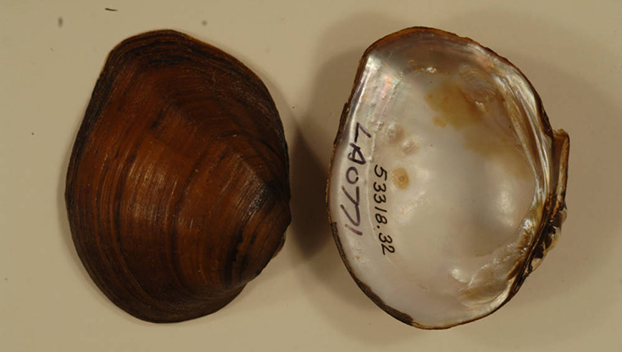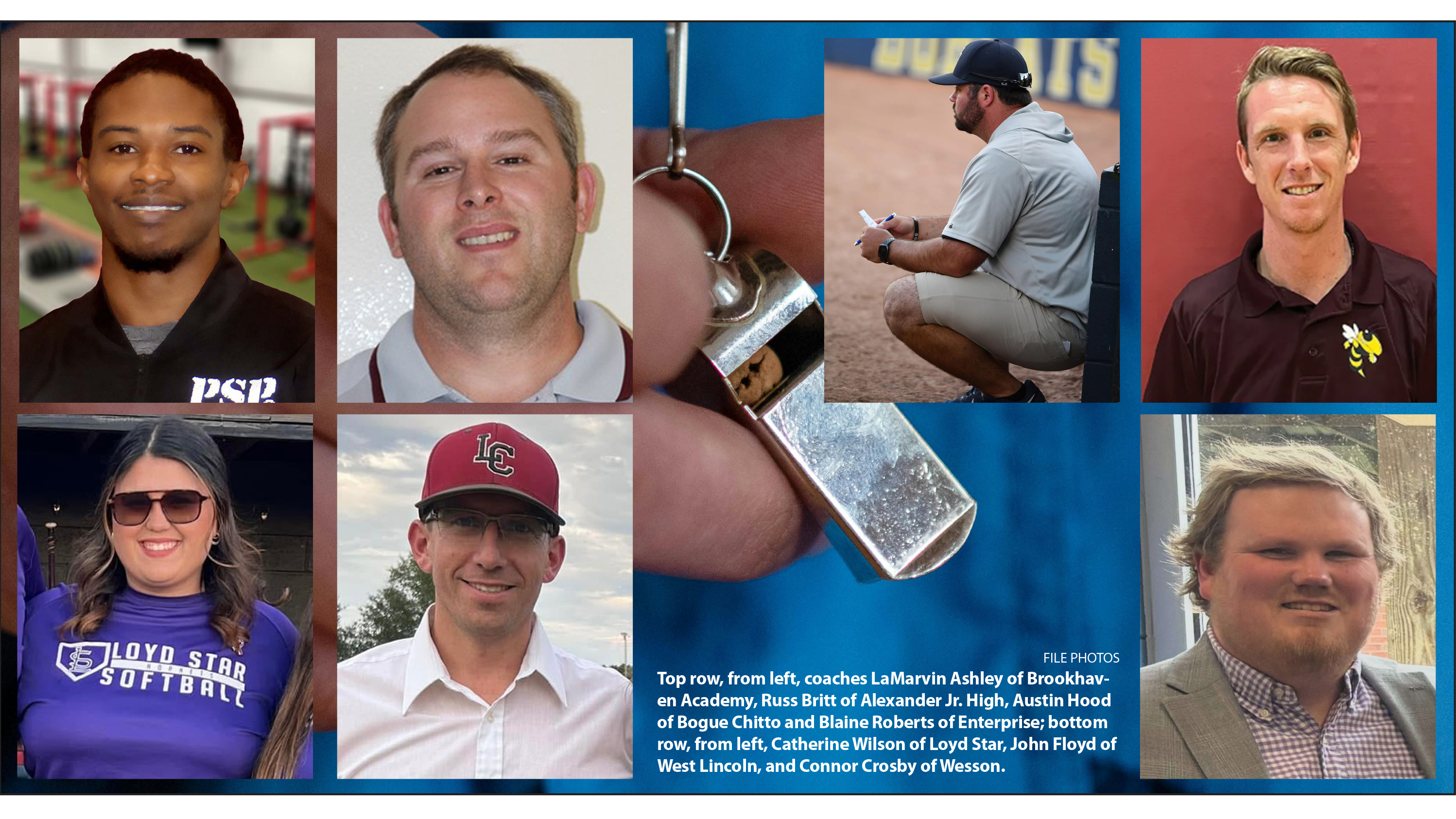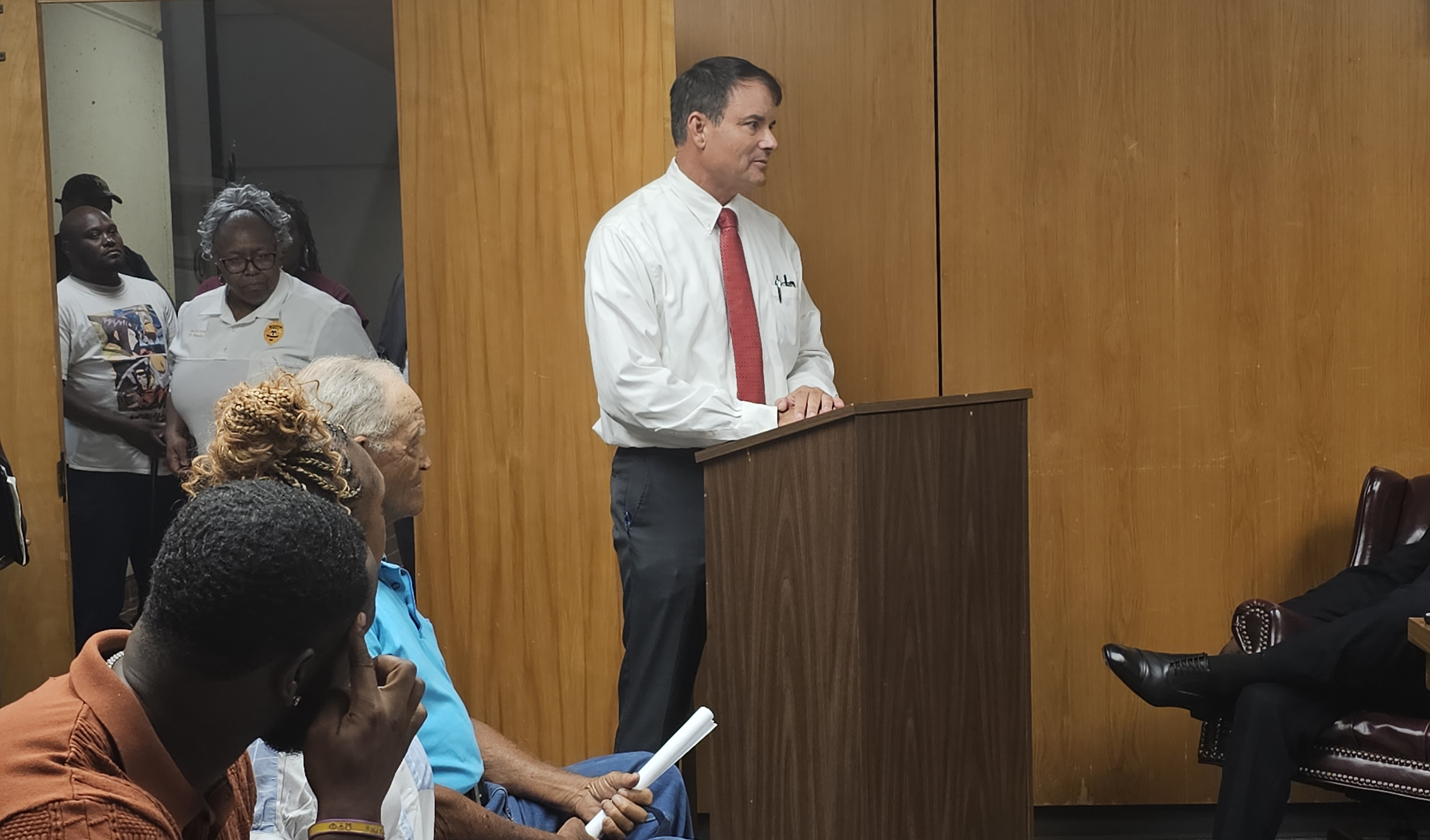USFWS proposes threatened listing for mussel found in Mississippi
Published 2:13 pm Monday, March 20, 2023

- A Louisiana pigtoe shell. (Matthew Patterson, USFWS Photo)
The U.S. Fish and Wildlife Service is proposing to list the Texas heelsplitter as endangered under the Endangered Species Act and is proposing critical habitat. The Service is also proposing to list the Louisiana pigtoe as threatened with a 4(d) rule and is proposing critical habitat. To inform these decisions, the Service reached out to species experts, including Tribes, state wildlife biologists, universities and federal agency researchers to collect information on the status of these species.
“The Endangered Species Act provides a critical safety net for fish, wildlife and plants and has prevented the extinction of hundreds of imperiled species, as well as promoted the recovery of many others and conserved the habitats upon which they depend,” Southwest Regional Director Amy Lueders said. “Native freshwater mussel species are part of the web of life and play an important role in improving water quality in rivers and streams in the Southwest.”
The proposed 4(d) rule for the Louisiana pigtoe would provide private landowners, river authorities and others increased flexibility as they carry out actions intended to help the species recover, like water management, channel restoration, and surveying and habitat enhancement projects in areas where the species may be present. Marion and Pearl River counties are the only counties in Mississippi to have a population of Louisiana pigtoe according to the USFWS.
The critical habitat designation identifies areas that are particularly important for the conservation of the species. It does not mean activities cannot occur in the area, only that federal agencies must consult with the Service if they are conducting, funding, or permitting activities that may adversely affect the species or their habitat. Designation of critical habitat does not affect land ownership or establish a refuge or preserve and has no impact on private landowners taking actions on their land that do not require federal funding or permits.
The Texas heelsplitter occurs in streams and rivers of the Trinity, Neches and Sabine river drainages in east Texas. The proposed critical habitat includes 831.8 river miles in 31 Texas counties.
The Louisiana pigtoe occurs in multiple river drainages across five states:
- East Texas – Big Cypress-Sulphur, Neches-Angelina, Sabine and San Jacinto river basins.
- Louisiana – Calcasieu, Sabine and Pearl river basins.
- West Mississippi – Pearl River.
- Southeast Oklahoma – Little River.
- Southwest Arkansas – Cossatot, Saline, Rolling Fork and Little rivers.
The Service is proposing to designate 1028.2 river miles of critical habitat for the Louisiana pigtoe in the following:
- Three Arkansas counties.
- Six Louisiana parishes.
- Two Mississippi counties.
- One Oklahoma county.
- Twenty-One Texas counties.
The Service is working with diverse stakeholders to identify, develop and implement voluntary conservation efforts for these species. These voluntary agreements provide non-federal landowners and developers the opportunity to implement conservation practices that address specific threats. They provide assurances that if a species is listed, non-federal landowners can continue to manage their land as outlined in their agreements with no additional requirements.
The Service works with private landowners through multiple mechanisms including the Partners for Fish and Wildlife Program and Texas Parks and Wildlife Department’s Landowner Incentives Program to enhance and restore habitat for fish and wildlife species in the watersheds where these freshwater mussels occur. The Working Lands for Wildlife Program, developed between the Service and the Natural Resources Conservation Service, promotes agricultural best management practices that benefit mussels. This program provides financial incentives and regulatory assurances for participating landowners.
Today’s announcement comes as the ESA turns 50 years old in 2023. Throughout the year, the Department of the Interior will celebrate the ESA’s importance in preventing imperiled species’ extinction, promoting the recovery of wildlife and conserving the habitats upon which they depend. The ESA has been highly effective and credited with saving 99% of listed species from extinction. Thus far, more than 100 species of plants and animals have been delisted based on recovery or reclassified from endangered to threatened based on improved conservation status, and hundreds more species are stable or improving thanks to the collaborative actions of Tribes, federal agencies, state and local governments, conservation organizations and private citizens.
As part of the proposal, the Service is opening a 60-day public comment period and will host a virtual informational meeting followed by a public hearing on May 2, 2023. A final decision on whether to list the two species will be made approximately 12 months after this proposal.
The rule for the proposal will be published in the Federal Register on March 20, 2023. The rule and maps can be found at http://www.regulations.gov by searching Docket No. FWS-R2-ES-2022-0026.
The Service is requesting comments or information from the public, other concerned governmental agencies, the scientific community, industry, or any other interested parties concerning this proposed rule. Comments must be received within 60 days, on or before May 19, 2023. You may submit comments by one of the following methods:
(1) Electronically: Go to the Federal eRulemaking Portal:
http://www.regulations.gov. In the Search box, enter FWS-R2-ES-2022-0026, which is the docket number for this rulemaking. Then, in the Search panel on the left side of the screen, under the Document Type heading, check the Proposed Rules box to locate this document. You may submit a comment by clicking on “Comment Now!”
(2) By hard copy: Submit by U.S. mail or hand-delivery to: Public Comments Processing, Attn: FWS-R2-ES-2022-0026, U.S. Fish and Wildlife Service, MS: BPHC, 5275 Leesburg Pike, Falls Church, VA 22041-3803.
On Tuesday, May 2, 2023, the Service will hold a virtual informational meeting from 5-6 p.m. CST, followed by a public hearing from 6:30-8 p.m. CST. Anyone wishing to attend or make an oral statement at the public hearing must register before the hearing at https://empsi.zoom.us/webinar/register/WN_bWcGzlb6RHKMDTm6QaX8fw. The use of a virtual public hearing is consistent with our regulations at 50 CFR 424.16(c)(3).




